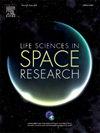结合下体负压和先进的大语言模型人工智能的航天健康精密监测
IF 2.8
3区 生物学
Q2 ASTRONOMY & ASTROPHYSICS
引用次数: 0
摘要
长期暴露于微重力环境会影响肌肉骨骼健康,并增加在执行微重力任务和返回地球时遭受骨科损伤的可能性。虽然正在研究缓解某些伤害风险的对策,如阻力(或重量)运动和下体负压(LBNP),但越来越多的证据表明,由于缺乏可随时间评估负荷/诊断指标的飞行诊断方法,目前的模式并不能确保宇航员的安全或健康。在这里,我们建议整合一种新的视觉语言大语言模型(DeepSeek-VL),作为微重力环境下监测肌肉骨骼健康的潜在自主诊断代理。DeepSeek-VL将自动分析来自LBNP设备的放射学数据和生物力学数据。将根据骨质密度的损失或损害、关节中心稳定性的损失或无效的加载模式来做出决定——以宇航员为主要用户,提供有关肌肉骨骼健康的个性化和特定反馈。与传统的报告方法依赖于家庭专家的跨机构分析不同,DeepSeek-VL允许实时、自主地解释肌肉骨骼成像指标(和生理指标),以便及时制定个性化的对策。在这里,我们回顾了架构的调整,包括微重力特定的数据采样、训练协议和在国际空间站部署的影响。我们预计,DeepSeek及时开发飞行准备诊断报告将促进对肌肉骨骼健康和安全的飞行/系统监测,特别是对正在接受负荷管理培训(例如,LBNP)的宇航员,并确保对策及其产出的有效性。我们将解决规避风险限制和障碍的方法,并建立一个联合的、自适应的、有弹性的基于人工智能的平台的重要性,以减轻长期任务期间宇航员肌肉骨骼健康的风险。最后,我们在对有效的骨科医疗日益重要的当前背景下,解决了地面模型和医疗保健当局的一些考虑。本文章由计算机程序翻译,如有差异,请以英文原文为准。
Precision health monitoring in spaceflight with integration of lower body negative pressure and advanced large language model artificial intelligence
Long-term exposure to microgravity influences musculoskeletal health and enhances the likelihood of sustaining orthopedic injuries while on a microgravity mission and upon return to Earth. Although countermeasures are being investigated to alleviate some risks of injury, such as resistive (or weight) exercise and Lower Body Negative Pressure (LBNP), evidence is accumulating that current paradigms do not ensure the safety or health of astronauts because of a lack of in-flight diagnostic methods, in which load/diagnostic metrics can be assessed over time. Here, we suggest the integration of a new vision-language large language model (DeepSeek-VL) as a potential autonomous diagnostic agent for monitoring musculoskeletal health in a microgravity environment. DeepSeek-VL will autonomously analyze radiographic data and biomechanical data streamed from a LBNP device. Determinations will be made based on lost or compromised density in bone, lost joint-centered stability, or ineffective loading patterns - providing personalized and specific feedback regarding musculoskeletal health with the astronaut as the primary user. Unlike conventional reporting approaches that rely on cross-institutional analysis by household experts, DeepSeek-VL allows for real-time, and autonomous interpretation of musculoskeletal imaging metrics (and physiological metrics) for on-time personalized countermeasure development. Here, we review architectural adaptations including microgravity specific samplings of data, training protocols and implications of deployment in the ISS. We anticipate DeepSeek's timely development of flight-ready diagnostic reporting will facilitate in-flight/systematic monitoring of musculoskeletal health and safety, especially for astronauts undergoing load management training (e.g., LBNP) and ensure effectiveness of countermeasures, their outputs. We will address methods to circumvent limitations and barriers to risk, and establish the importance of a federated, adaptive, and resilient AI-based platform to mitigate risk for astronaut musculoskeletal health during extended missions. Finally, we address some considerations for terrestrial model and a healthcare authority within a current context of growing importance for effective orthopedic healthcare.
求助全文
通过发布文献求助,成功后即可免费获取论文全文。
去求助
来源期刊

Life Sciences in Space Research
Agricultural and Biological Sciences-Agricultural and Biological Sciences (miscellaneous)
CiteScore
5.30
自引率
8.00%
发文量
69
期刊介绍:
Life Sciences in Space Research publishes high quality original research and review articles in areas previously covered by the Life Sciences section of COSPAR''s other society journal Advances in Space Research.
Life Sciences in Space Research features an editorial team of top scientists in the space radiation field and guarantees a fast turnaround time from submission to editorial decision.
 求助内容:
求助内容: 应助结果提醒方式:
应助结果提醒方式:


